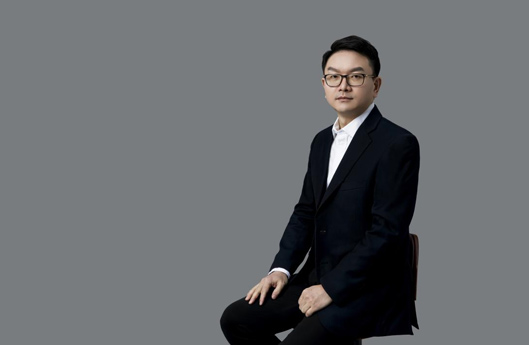Terminus Group's Top AIoT Scientists: What does the rise of ChatGPT mean for AI-generated assistance?
The rise of ChatGPT has, once more, shone the spotlight of international attention on the AI industry and, as a result, has raised public discussion of what the future dynamic of human and AI co-existence will look like - socially and commercially. Because of its ability to learn, improve its performance and provide users with relevant answers, AI-generated content has become one of the most talked about topics of the last few months.
While still in the beta stage or soft-launch phase of its development, with programming bugs still being worked out, unlike bots that are currently used in existing chat apps, ChatGPT can perform multiple rounds of dialogue with users and can learn new information to provide better answers.
In light of this ongoing global conversation, we asked three experts in areas such as AI, IoT, Artificial General Intelligence (AGI), ChatGPT, and AI Generated Content (AIGC), how they see the future of AI progressing:

Dr. Hua Xiansheng, CTO of Terminus Group
"ChatGPT is based on big model and big data training, it is not close to AGI…yet"
AI may have already exceeded the ability of ordinary people to some extent, but its capabilities still remain somewhat limited. In the art world, for example, an AI-generated work, Théâtre D'opéra Spatial, took first prize in the digital category at the Colorado State Fair, over human-produced artwork.
A key element to understand here is that a person's artwork is a projection of his ability to transform three-dimensional space into a two-dimensional space. Machine learning algorithms come from two-dimensional space and so, currently, does not have the ability to learn the "higher space". Therefore, although machine learning has certain abstract abilities, it has difficulty breaking through the third dimension. This will come, however, as it is within the capabilities of human innovation to solve this.
How that works is if the AI has seen enough samples in two-dimensional space, it may exceed the known part of the samples and expand to the part of two-dimensional space that has not been projected. In this regard, today's AI can imitate the appearance of many talented artists' work. However, it currently does has not have the ability to become a "master" or innovate in a new field, so we will have to wait some time before the next Picasso, Rembrandt or Leonardo da Vinci has a challenger from AI artists.

Dr. Ling Shao, Chief Scientist of Terminus Group and President of Terminus International
"AI that can solve practical problems is good AI and integration with 6G will create further disruptive experiences in human-AI interaction."
Although models such as GPT-3 have been able to generate texts, novels, and even poems close to person's level, this has does not have any relation to what we would classify as Artificial General Intelligence (AGI) yet.
That said, ChatGPT's performance in user interaction is surprising. Its popularity also indicates that people's expectations regarding AI applications, to bring changes to our lifestyle and behavior patterns, is certainly heightened. However, from the underlying technical logic, ChatGPT is actually a model based on GPT-3.5 for dialogue fine-tune, which is an advanced chatbot.
Although ChatGPT answers questions more effectively and better than the chat robots seen in the market before, the reality is this effect is also based on big data and big model training. It does not have its own ideas or "common sense" and so gives answers according to the training model and information. To be precise, it is just a big language model.
By definition, AGI should be as smart, agile and flexible as human beings, and have similar abilities to conduct various tasks, rather than relying on the memory and so-called knowledge acquired through training. However, in real situations, people do not need to worry about whether the model used is AGI. At this stage, the development of AI technology can be aimed more at simply serving human beings and enhance human capabilities. In many cases, we don't have to worry about whether a certain AI model is closer to AGI. The AI that can solve practical problems is still good AI.
This can be seen in the application of Microsoft Bing, Office, GitHub, Azure and other products aligned or related to ChatGPT, including the ERNIE Bot project being developed by Baidu. Undoubtedly, while ChatGPT may not be AGI, it is still a good, commercially-viable and disruptive product.
As future-oriented life scenarios – from service robots to voice remote and automatic end-to-end equipment – the dialogue AI application scenarios in smart or "AI Cities" are obviously broader.
Value is the key factor to measure whether a thing should be adhered to. "The word 'precision' has many meanings to me, it is also my requirement for myself, my students and my team. Only when we are truly 'proficient' in a technology can we speak of 'accuracy'. Only the technology that can produce value and promote human progress can be called 'exquisite'. Seizing the chance of success and creating more value for the upstream and downstream of the industry can achieve a wonderful life. AI is a practical technological science, hoping to change the world through scientific and technological means.

Dr. Yang Yang, Chief Scientist of Terminus Group
“AI itself does not have subjectivity, its impact still depends on who uses it and how it is used.”
The current research on 5.5G and 6G will accelerate the frontier breakthrough of AI and will also promote universal and inclusive intelligence. In the future, with the further integration of 6G technology and the next generation of AI technology, AI Cities will usher in completely different experiences, including interactions between people and robots, and even interaction between brain-computer interfaces.
The integration of humans and technology and the concept of the "Augmented Human" is particularly interesting. The "Augmented Human" is a concept that has been often mentioned in relation to technological advances and various devices such as mobile phones, earphones, AR, VR glasses, will help us live better, support gaps in human capabilities, and gradually and organically integrate with human experiences – becoming the extension of our hands, ears, and eyes. The future of technology development must be a process of continuous integration with each person’s needs and capabilities. But the boundary of integration needs to be a further ethical discussion.
The issue of technology and ethics needs to be discussed jointly by scholars in the fields of technology and humanities. Personally, I tend to a more conservative view that the extension of human senses, including the extension of life, should be limited.
That said, I believe technology is neither good nor evil, and its impact depends on the people who use it and the method of using it. AI is no different from all technologies in this respect. AI itself does not have subjectivity, so the responsibility for its possible harm cannot be attributed to the technology itself.
There are two ways to achieve balance. When technology brings hidden dangers, another kind of technical restraint is needed. (For example, when ChatGPT's automatic document generation is used to complete assignments or papers, there may be a technology to determine whether the document is automatically generated by the machine.) Secondly, laws and regulations are also needed. By combining technology with laws and regulations, technology can play a positive role in reducing problems caused by technology abuse.
Undoubtedly, the future society is one of human-machine coexistence. The balance we need to achieve is that machines do what machines are good at and people do what they are good at.
Human beings should certainly make full use of AI's ability to serve them, while vigorously developing abilities that machines cannot achieve. This should be the state of human-machine coexistence in the future. And, although human beings are increasingly using AI, it does not mean that humans can give up what machines can do, just as humans use cars, trains and planes as a means of travel, it does not mean humans need give up the ability to walk. Humans cannot compete with cars in speed, but they can do many more flexible things that cars cannot do. The same is true for AI. It is not necessary to compete with AI to do what AI is good at, the human job market should both embrace AI capabilities but also upskill and improve their innovation ability to do more things that AI cannot do.
Undoubtedly, ChatGPT technology is very powerful and it may produce more managed and high-quality results, if used in specific fields. For example, on the basis of the basic model, in the field of scientific research, discipline education, industrial technology, smart city and other fields, it may show more in-depth professional capabilities and play a greater positive role.
